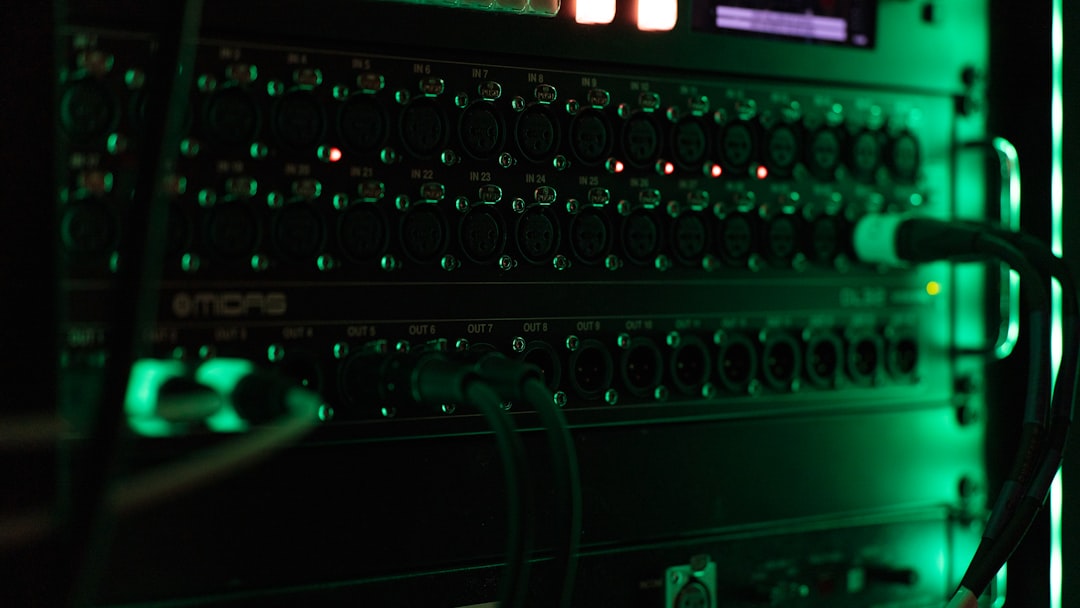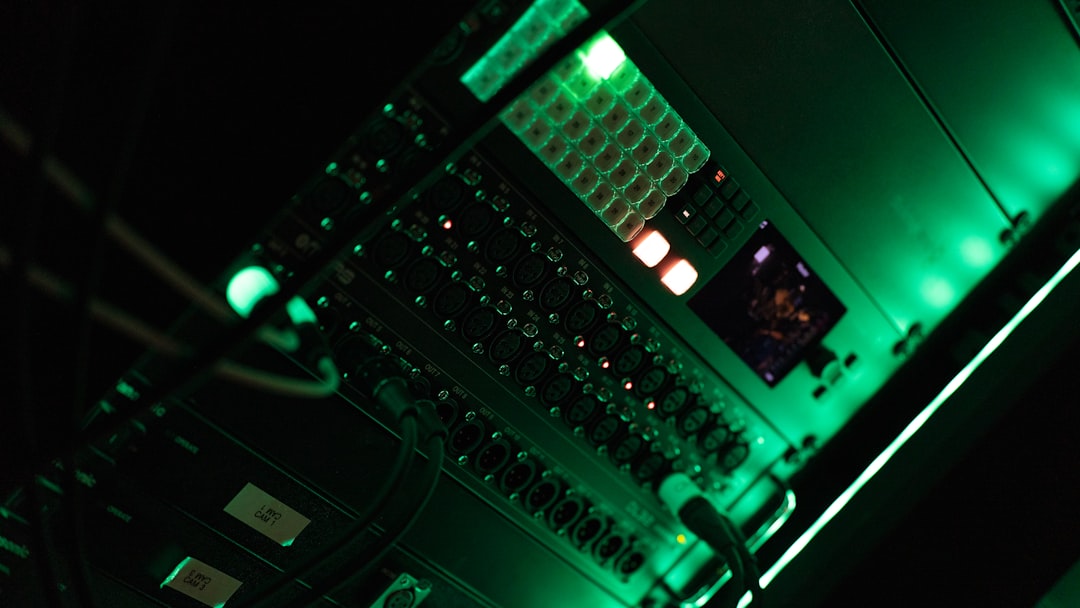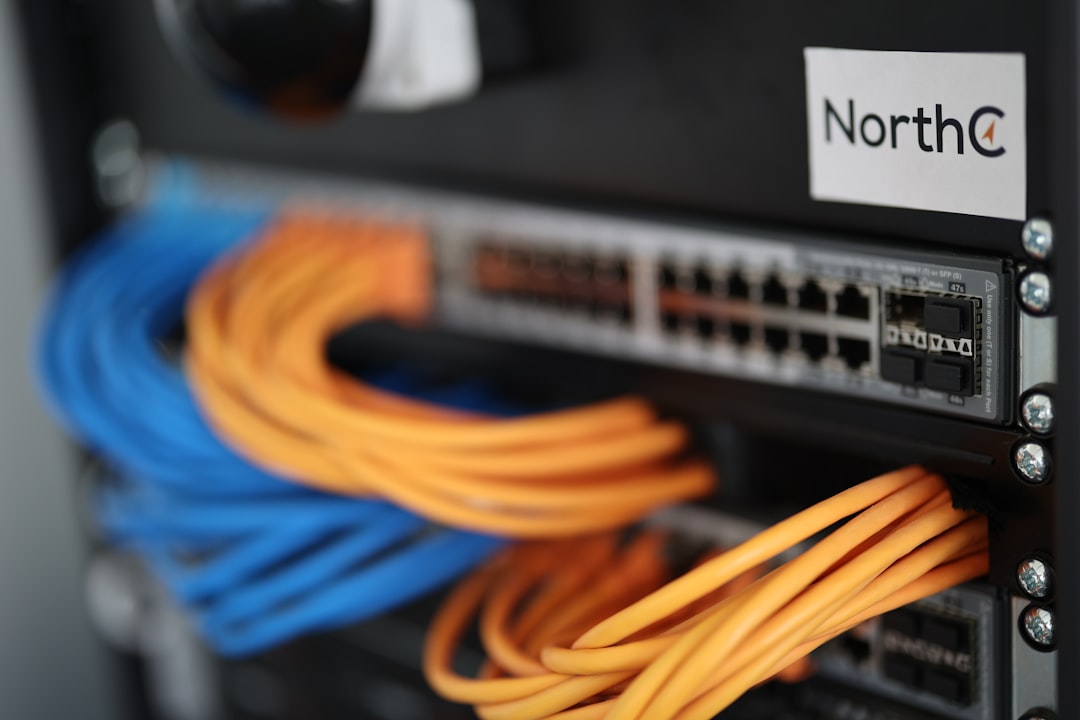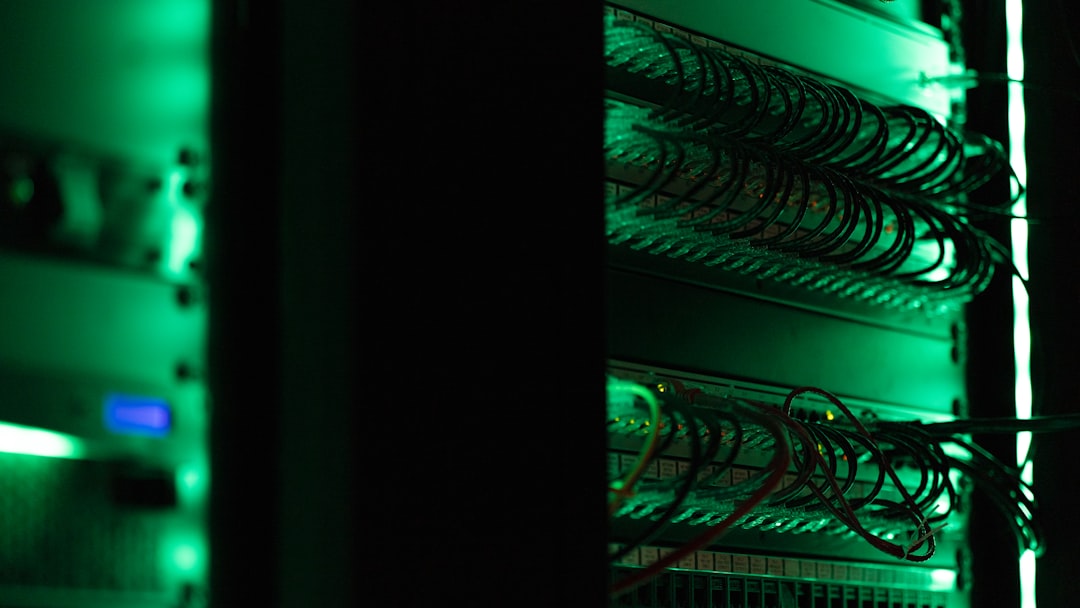Configuring Unraid as a Dedicated AI Video Upscaling Server A Step-by-Step Guide for 2024
Configuring Unraid as a Dedicated AI Video Upscaling Server A Step-by-Step Guide for 2024 - Setting Up Unraid and GPU Passthrough for AI Video Upscaling
To harness the power of your GPUs for AI video upscaling within Unraid, you'll need to set up GPU passthrough, a process that assigns specific graphical processing power directly to your virtual machines (VMs). This ensures that your VMs have dedicated resources for intensive video processing tasks like AI upscaling. You'll need to install the correct drivers for your NVIDIA or AMD GPUs within Unraid before anything else.
The core of the GPU passthrough setup involves using Unraid's tools to select and manage both your GPU and its associated audio components. Once you've made these selections, a reboot is necessary to apply the changes. Furthermore, if you have multiple GPUs, utilizing them effectively can involve running separate instances of your AI upscaling software, possibly like Topaz AI. However, be mindful that ensuring temporal coherence is vital for a smooth upscaled output. Without proper attention to this, your videos might suffer from visual defects such as flickering.
During the setup process, you will also need to address potential network configuration problems within the VMs. This includes properly setting the IP address, subnet mask, gateway, and DNS within each VM's network settings. If not done carefully, this could prevent proper communication and cause unexpected behaviors when interacting with the passthrough process. Certain troubleshooting may be required as well, like enabling ACS override settings in specific scenarios. Having a working knowledge of troubleshooting methods related to GPU detection, particularly within the device manager, can prevent frustrating setbacks.
1. **PCIe Lanes and Bottlenecks**: Getting GPU passthrough working well relies on understanding how PCIe lanes are used. The number of lanes available to each GPU can seriously impact performance. If a GPU doesn't have enough dedicated lanes, you might see performance slowdowns. It's something to watch closely during setup.
2. **IOMMU Groups: A Balancing Act**: The concept of IOMMU groups is essential for GPU passthrough – it's how the system organizes devices. Getting this wrong can lead to problems with devices accessing each other, or even make the system crash. It's an area that requires a fair amount of attention during the initial configuration.
3. **Memory Overhead: Finding the Right Balance**: Passing through the GPU introduces extra memory overhead that might not be immediately obvious. This overhead can make the system less efficient overall. Figuring out how to balance the memory used by the host system and the virtual machine is crucial for optimal performance.
4. **GPU Driver Choices: NVIDIA vs AMD**: Choosing a GPU for AI video upscaling depends a lot on its compatibility with the virtualization software and drivers. NVIDIA has some restrictions on its consumer-grade cards for passthrough, while AMD cards seem to have more flexibility. This could influence your choice depending on the cards you can find and their prices.
5. **Power Management: Staying Stable**: Properly configuring power management is essential for a stable system, especially when handling demanding tasks. You might need to tweak BIOS settings to ensure the GPU receives enough power without issues and prevent unexpected shutdowns.
6. **Virtualization Overhead: A Tradeoff**: Unraid offers a relatively lightweight virtualization platform, but there's still some performance overhead involved. It's beneficial to benchmark video processing workloads with and without passthrough to get a sense of the difference and determine if the overhead is worth it.
7. **Heat: Keeping Things Cool**: AI video upscaling is resource-intensive and produces a lot of heat. You'll want to make sure you have a good cooling setup for both the GPU and the Unraid server to prevent thermal throttling, which can lower performance. It's something to plan for up front.
8. **Storage Bottlenecks: Speed Matters**: The speed of your storage (SSD vs. HDD) can significantly influence how quickly video data is processed. Fast read/write speeds on the storage are essential to avoid bottlenecks, especially when working with large files. It's worth considering for better upscaling performance.
9. **Virtual Machine Tuning: Precision Is Key**: Optimizing VM settings, like carefully selecting CPU cores, can significantly affect how responsive your virtual machine is during resource-intensive tasks. The ability to fine-tune these settings can make a difference in overall video processing efficiency.
10. **Operating System Flexibility: Beyond Windows**: While Windows is commonly used for GPU workloads, Unraid offers support for various operating systems within its VMs. This flexibility can be useful for optimizing the upscaling process, since specific software may be better suited for certain operating systems based on the nature of the AI model or specific needs of the project.
Configuring Unraid as a Dedicated AI Video Upscaling Server A Step-by-Step Guide for 2024 - Installing NVIDIA Drivers and Configuring the GPU Plugin
To leverage your NVIDIA GPUs for AI video upscaling within Unraid, you'll need to install the correct drivers and configure the associated plugin. Start by getting the newest official NVIDIA drivers from their website. These drivers are crucial for achieving optimal performance and stability, and they unlock features like NVIDIA DLSS and Reflex, which can be beneficial for video processing. The driver installation itself can be tricky. Background processes, like Windows updates or other applications, can sometimes interfere and cause problems. Because of this, doing a clean install can be a good idea to avoid potential issues.
Once the drivers are successfully installed, you'll need to install the NVIDIA Driver Plugin through Unraid's Community Applications. This plugin is a critical piece for enabling your system to handle AI-related tasks, like upscaling videos, within your virtual machines. You'll need to configure the plugin properly to ensure resources are efficiently managed, leading to a more optimized and robust AI video upscaling server in Unraid. Getting this right helps your virtual machines (VMs) access the GPU effectively, maximizing performance for the intensive AI upscaling workloads.
1. **Driver Selection: A Balancing Act**: The ideal NVIDIA driver version for optimal performance isn't always the newest one. Some folks have found that older drivers can lead to better stability or performance in specific scenarios. Experimenting with different versions might unearth some hidden performance gems.
2. **NVENC/NVDEC: Specialized Hardware**: NVIDIA GPUs aren't just about raw processing power – they also have dedicated hardware for encoding (NVENC) and decoding (NVDEC) videos. Knowing how to use these specialized features can make a big difference in the speed of your AI video upscaling tasks.
3. **CUDA Cores: Parallel Processing Powerhouses**: NVIDIA GPUs are built with many CUDA cores, each capable of handling a piece of a task simultaneously. The more CUDA cores you have, generally, the better your AI video processing will be. How well you configure your system to use those cores can be key to maximizing the results.
4. **Kernel Tweaks: Fine-Tuning Unraid**: Some people get better GPU performance by adjusting kernel parameters in Unraid. These are essentially settings that control how the operating system communicates with the hardware. Small changes can sometimes lead to surprisingly large improvements in video processing speeds. It's a fascinating rabbit hole to explore.
5. **Boot Options: Setting the Stage**: The way your server starts up can have an impact on GPU performance. BIOS settings, such as disabling fast boot, can prevent conflicts and make GPU passthrough smoother. It's one of those things that's often overlooked but can be important.
6. **Passthrough Challenges: Compatibility is King**: Not every GPU is created equal when it comes to compatibility with virtualization. Some people run into trouble with newer GPUs, which might behave differently in passthrough compared to older ones. It's smart to research GPU compatibility before embarking on the installation journey.
7. **Architectural Considerations: Turing, Ampere, and More**: NVIDIA's GPU architecture, whether it's Turing or Ampere, comes with unique features that might be better suited to different kinds of AI tasks. Understanding the specific strengths of each generation can help you maximize their capabilities for video upscaling.
8. **VBIOS: An Often Overlooked Player**: The VBIOS, the firmware for your GPU, can be modified or updated to improve compatibility or performance in virtualized environments. It's something that often slips under the radar but can be critical for stability and resource utilization during intensive video processing tasks.
9. **Memory Matters: GDDR, HBM, and Speed**: The type of memory your GPU uses (GDDR5, GDDR6, HBM, etc.) impacts performance. Faster memory with higher bandwidth can lead to huge boosts in processing speed, especially when working with high-resolution videos.
10. **Resource Isolation: Avoiding Bottlenecks**: When you're doing demanding things like AI video upscaling, resource contention can lead to performance hiccups. Isolating your VM to run on a single physical CPU core can prevent this. It's a technique that can make processing times more predictable.
Configuring Unraid as a Dedicated AI Video Upscaling Server A Step-by-Step Guide for 2024 - Creating a Virtual Machine for Dedicated Video Processing
When you're configuring Unraid for dedicated video processing, especially AI video upscaling, creating a virtual machine (VM) is a core step. It lets you effectively isolate and dedicate your hardware resources to these intensive tasks. A key part of optimizing a VM for video processing is making sure you've got the latest VirtIO drivers, especially when dealing with Windows VMs. These drivers help storage, network, and memory performance within the VM. To set up a VM in Unraid, you navigate to the VM Manager and configure the settings, and you can fine-tune things further by using the XML view to adjust specifics within the VM settings. Before creating a VM, it's really important to think about your hardware – particularly if you're dealing with programs that need a lot of power. Because of how AI video upscaling works, maintaining a smooth visual output requires a specific approach – maintaining what's called temporal coherence. It can be tricky compared to simply upscaling images, so planning to avoid things like flickering is essential. Ignoring this can introduce issues with how the video looks after it's been upscaled.
Unraid's ability to create virtual machines (VMs) makes it a solid platform for dedicated video processing, including the ever-growing field of AI video upscaling. When setting up a Windows VM, it's wise to grab the newest VirtIO drivers to make sure storage, networking, and memory are working at their best. You'll find the VM manager in Unraid's settings, which is where you'll set up the VMs. One handy feature within the VM settings is the "XML view" – this lets you tweak all sorts of parameters for a fine-grained control over how your VM operates.
AI video upscaling presents a unique challenge compared to upscaling still images because each frame has to smoothly transition into the next (temporal coherence). When crafting a VM, it's crucial to consider hardware demands, particularly if the software you're using is heavy on resources. Containers, a different approach Unraid offers, might be a good option if you're trying to conserve system resources.
Tailoring the setup to the needs of your specific AI video processing project is key, as various neural networks can have varying performance expectations. Before creating a VM, especially if you're aiming for a Windows 11 install, check that your Unraid setup meets the minimum specs. Also, it's generally a good practice to prepare your system prior to creating a virtual machine by cleaning up any leftover data. For example, you could think about getting rid of the config folder and renaming the USB key used to boot Unraid.
The way you configure the virtual CPUs within your VM (vCPUs) can make a big difference in performance, with an uneven number potentially causing snags. You'll probably want to align your vCPU assignments with your actual CPU's core count and whether it supports hyperthreading. Nested virtualization offers an interesting avenue for more advanced configurations, allowing a VM to function as a hypervisor itself. However, be mindful that this feature can increase performance overhead, particularly when handling resource-intensive tasks. Some GPUs are capable of outputting multiple displays and resolutions simultaneously, which could prove useful if you need to process multiple video streams concurrently.
It's wise to assign a fixed amount of RAM to your VM to prevent performance issues. Memory contention with the host system can create unpredictable behavior if not addressed. Familiarity with video processing tools like FFmpeg can be valuable, particularly when it comes to optimizing workflows alongside your graphics drivers. Efficient resource scheduling is crucial in a virtualized setting, and advanced scheduling algorithms can help prevent conflicts when multiple tasks compete for resources, particularly during periods of intense video processing.
Network performance can heavily affect the ability to stream video data smoothly for upscaling, especially if you are drawing data from external sources. Latency and bandwidth become critical components. How you allocate GPUs to your VMs is another consideration; a single GPU might create contention if used by multiple VMs, whereas dedicated GPUs for individual VMs can promote greater processing consistency. Using benchmarking and profiling tools to analyze the entire video processing pipeline can illuminate any bottlenecks and guide adjustments to both the software and hardware. Finally, given how demanding video processing can be on hardware, implementing strong thermal management solutions, potentially even using things like liquid cooling, is critical to maintain peak performance and avoid component failure over extended periods of use.
Configuring Unraid as a Dedicated AI Video Upscaling Server A Step-by-Step Guide for 2024 - Optimizing GPU Performance with Dummy Plugs and KVM
When setting up an Unraid server for AI video upscaling, optimizing GPU performance is crucial. Using dummy plugs and KVM can be a significant step towards achieving this goal. Dummy plugs are helpful because they essentially trick the GPU into thinking a monitor is always connected, even when it isn't. This can resolve display issues that might crop up if you're only using a remote desktop connection. KVM (Kernel-based Virtual Machine) helps you make the most of your GPU by allowing you to pass it through directly to virtual machines. This means the VM gets dedicated access to the processing power of the GPU, which can make a noticeable difference for tasks that are computationally demanding like AI video upscaling.
Beyond these two techniques, fine-tuning the operating environment can provide further improvements. Power settings within the operating system, network settings for the VMs, and isolating specific devices for optimal performance all play a role in creating a more stable and responsive server for video upscaling. The following part will explore these and other techniques in more detail, helping to achieve a truly optimized Unraid setup for your AI video upscaling needs.
When setting up Unraid for AI video upscaling, optimizing GPU performance becomes critical, especially when dealing with virtual machines (VMs) using KVM. It turns out that simple dummy plugs can play a surprisingly important role in this process.
First off, dummy plugs can trick the GPU into thinking a monitor is always connected, preventing it from entering low-power modes. This can be helpful for long processing jobs that AI video upscaling frequently involves. When used with a KVM switch, they can potentially lead to lower latency, a significant benefit for responsive GPU operation.
One unexpected consequence of using dummy plugs in a KVM setup is that it can help ensure the GPU stays at its peak performance levels, especially under heavy load. If you have multiple GPUs, using a dummy plug for each can even help distribute the work more evenly. In virtualized environments, this can be useful for preventing one GPU from being underutilized while others strain.
Moreover, dummy plugs can aid with GPU resource identification within KVM by making sure the virtualization software "sees" all the connected devices. This helps with ensuring the GPU allocated to a VM is used at full potential. Interestingly, dummy plugs have a potential role in fixing odd compatibility problems that can sometimes occur when certain GPUs don't detect a monitor in a KVM setup. Using them can create smoother passthrough experiences.
There's a testing aspect here too. Dummy plugs provide a convenient way to test and fine-tune GPU performance in a controlled virtual environment. This can be incredibly valuable for engineers trying to optimize the setup before putting it to work with a full AI video upscaling pipeline. Moreover, the way drivers interact with the GPU in a virtualized environment can be influenced by the use of dummy plugs. If a driver is designed with them in mind, it can potentially make a difference in how resources are handled for tasks like video processing.
Some users have even observed that adding dummy plugs can lead to improved performance in VMs. It seems the GPU might optimize itself based on the assumption it's always under a heavy load, creating an unanticipated boost in performance. From a practical perspective, dummy plugs provide a cost-effective way to get more out of GPUs in a multi-VM setup. It's a simple but effective approach that doesn't require major hardware upgrades. It's intriguing how something as simple as a dummy plug can provide such useful benefits within a complex setup like Unraid and GPU passthrough for AI video upscaling. While not always intuitive, using dummy plugs with KVM offers a novel perspective on optimizing GPU performance in a virtualized environment.
Configuring Unraid as a Dedicated AI Video Upscaling Server A Step-by-Step Guide for 2024 - Addressing Temporal Coherence in AI Video Upscaling
When upscaling videos using AI, ensuring smooth transitions between frames, known as temporal coherence, is critical for a good outcome. Without it, you might see annoying flickering that ruins the experience. Thankfully, newer techniques are emerging to tackle this problem. For example, the UpscaleAVideo project uses a clever combination of localized and global methods. At the frame level, it focuses on fine details, while the global method looks at the video's consistency overall. These combined strategies help AI video upscaling deliver much better results, especially when it comes to high-resolution or complex scenes. As we increasingly demand higher-quality video content, understanding and applying temporal coherence will become even more vital in AI upscaling solutions. While impressive strides have been made, it's important to remember that achieving perfectly smooth, temporally coherent output remains challenging, and future developments will likely continue to refine these methods.
Maintaining smooth transitions between frames in a video, what we call temporal coherence, is critical for any AI video upscaling system. If not addressed properly, it can lead to flickering and other distracting artifacts. It's kind of like the difference between watching a smoothly animated movie compared to a jerky slideshow – the former is much more enjoyable.
Frameworks like UpscaleAVideo have been designed to handle temporal coherence in video upscaling by leveraging a text-guided latent diffusion approach. This framework is specifically tailored for video because it needs to keep track of the differences between frames. UpscaleAVideo uses a two-pronged strategy: local and global methods to make sure the video is upscaled in a consistent way.
Locally, it integrates temporal layers into things like the UNet and VAE Decoder within the model. These layers help ensure that each short sequence of frames in the video stays smooth and visually coherent. However, the approach avoids something called a flow-guided recurrent latent model globally, which seems to help simplify the whole upscaling process.
There's still a lot of work to be done. Video super-resolution is inherently harder than image super-resolution because we have to contend with randomness in the AI diffusion models and maintain visual fidelity in the output. Despite the difficulties, these text-based diffusion models, like those in UpscaleAVideo, have shown some amazing results across benchmarks with synthetic and real-world video data. They've shown promising results in generating visually realistic videos that maintain the smooth transitions between frames even in generated content.
It's fascinating to see how far these techniques have come. Upscaling images is one thing, but upscaling video with good temporal coherence presents some unique problems. The methods developed are definitely worth watching, as they could pave the way for even more interesting applications in the future. And if you're interested in setting up your own AI video upscaling server with Unraid in 2024, there are plenty of resources to get you started. You can find step-by-step guides and tools like QualityScaler, which give you a user-friendly way to interact with AI models while keeping an eye on GPU memory usage. It's an area of research and engineering where the hardware and software are working hand-in-hand to improve how we can interact with videos.
Configuring Unraid as a Dedicated AI Video Upscaling Server A Step-by-Step Guide for 2024 - Leveraging Community Resources for Troubleshooting and Best Practices
When setting up Unraid for AI video upscaling, you can greatly benefit from the wealth of knowledge available within the Unraid community. This community offers a range of support, from tackling specific problems you might run into to sharing valuable tips on squeezing the most performance out of your server. This collective knowledge can save you a lot of time and headaches, especially when you're facing common Unraid networking issues or trying to fine-tune your setup for optimal video processing. Beyond troubleshooting, you can also learn valuable insights from others about security best practices. This includes understanding the need for strong password management and why it's crucial to keep good documentation about your Unraid setup. By fully utilizing these collective resources, you'll be able to create a more streamlined and secure environment for your AI video upscaling projects. While the community can be helpful, it's important to be critical of any advice you encounter. Not every suggestion is perfect for every situation.
The Unraid community offers a treasure trove of resources that can be incredibly helpful for troubleshooting and optimizing your server, particularly when setting it up as a dedicated AI video upscaling server. Since Unraid relies heavily on community contributions, you'll find that many solutions are quicker to find from fellow users than relying on official support channels. For instance, users regularly share their experiences, solutions, and even code snippets that aren't necessarily captured in standard documentation. This collective knowledge, readily available in forums and discussion groups, can save you hours of frustration when wrestling with tricky server issues.
Often, community-driven plugins and updates for Unraid are released at a faster pace than official releases. This rapid cycle of improvements and bug fixes is a testament to the power of collective action. It's quite common to see community members fixing and improving the software, leading to a much more vibrant and adaptable server experience compared to a solely vendor-driven ecosystem. You'll also notice that the accepted "best practices" for Unraid configuration can shift over time. Participating actively in the online discussions can introduce you to new, more optimized methods or specialized tools that outperform traditional approaches.
Furthermore, experienced Unraid users often create and share detailed guides and tutorials that document their unique server setups. This "crowd-sourced" documentation can be incredibly insightful when you encounter unusual problems. Learning from others' experiences, often captured in meticulous walkthroughs, accelerates your understanding more than digging through generic documentation. It's like having a seasoned technician constantly guiding you, even though you might be interacting with the same issue entirely alone.
The collaborative nature of online communities is also a great resource. When you encounter a particularly challenging issue, having a group of like-minded users chiming in with their perspectives can provide you with a much wider range of potential solutions than you would find alone. There is real benefit from the synergy in these discussions.
The shared experiences within the community also shine a light on how specific hardware choices may influence the performance of Unraid for AI video upscaling. It's quite illuminating to see discussions about the subtle differences that arise when combining various components. This is helpful because you can learn from others' choices and tailor your hardware selections to a particular set of needs.
Moreover, users frequently share benchmarks and performance data from their different configurations. These real-world data points can offer critical guidance when tuning your Unraid server for specific video upscaling workloads. Having something to measure against can improve decision-making about which software or components might offer the best value.
Interestingly, these communities also act as a type of early-warning system. Users can discover and document potential issues before they become widespread. This can prevent headaches and wasted time on troubleshooting newer versions of the software. The forums often become a place where users help each other circumvent problems in real-time, which is pretty remarkable when you think about it.
Frequently, clever users will share scripts and automation tools for common Unraid tasks. These scripts can save you from tedious repetitive operations, simplifying management of your server. Having code readily available for adapting to your needs helps to streamline things.
Similarly, the collective power of the community can create and maintain compatibility lists for various Unraid hardware combinations. Having this centralized knowledge readily available can help to inform decisions before you invest in new hardware, reducing the chance of unpleasant surprises.
Overall, Unraid's community-driven approach presents a unique environment for troubleshooting and optimization. This dynamic and responsive ecosystem can be highly valuable for ensuring your AI video upscaling server runs smoothly and performs at its peak capabilities. In the end, you're learning from the collective experience of everyone else, which is an incredible asset when you're dealing with something as complex as building a custom AI server on Unraid.
More Posts from ai-videoupscale.com:
- →Local AI Video Upscaling A Comparative Analysis of 7 Tools for Enhancing Video Resolution in 2024
- →The Science Behind 4K Video Clarity on 1080p Displays A Pixel-Perfect Explanation
- →Comparing Media Downloaders Beyond 4K Resolution in 2024
- →AI Video Upscaling Troubleshooting Common Issues in July 2024
- →How AI Video Upscaling Improves Communication Quality in Virtual Presentations
- →The Art of Post-Production Transforming Raw Footage into Cinematic Magic





